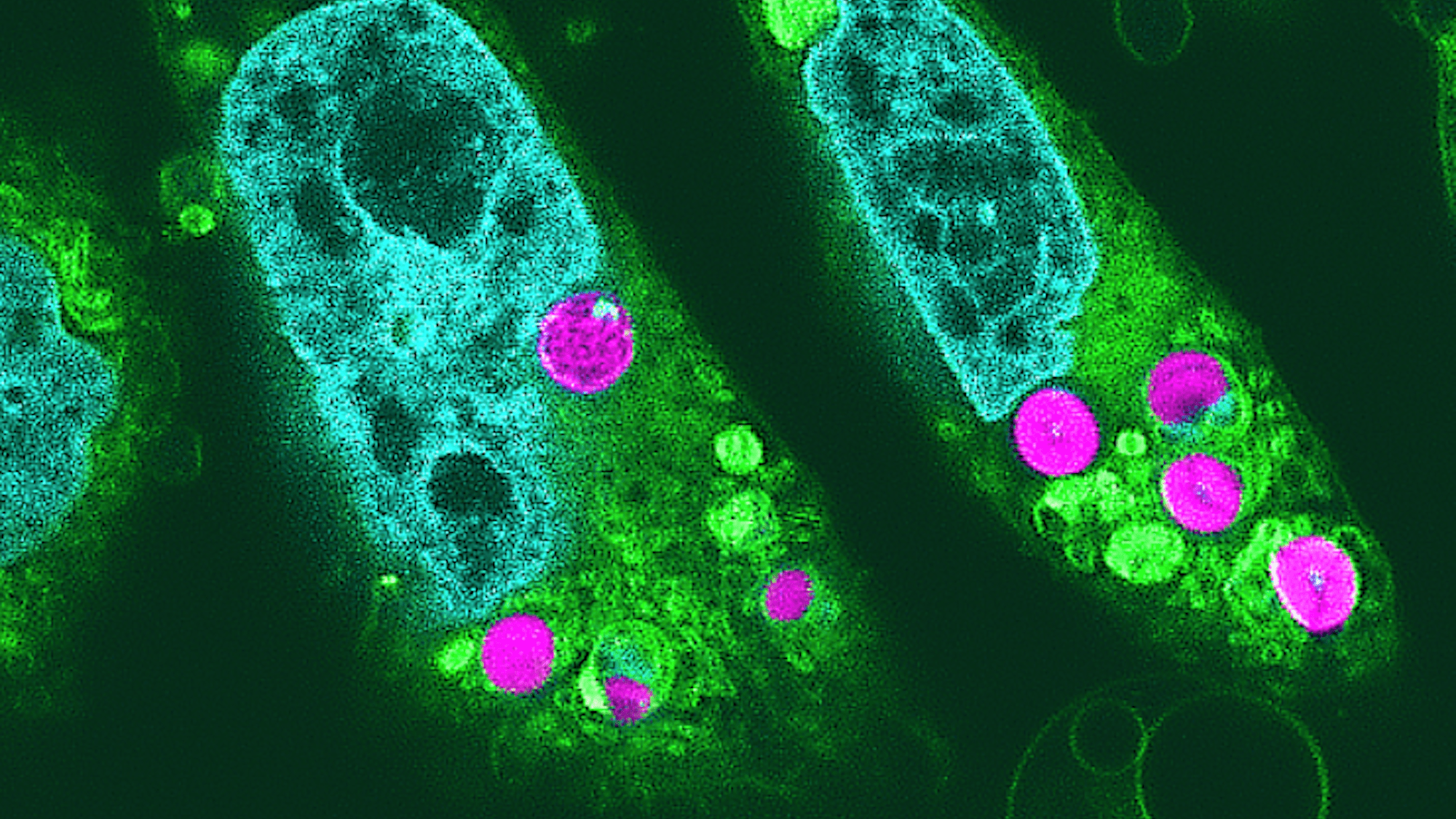Instructions

Revolutionary 'Planimal' Cells: A Breakthrough in Cellular Energy Production
Scientists have unveiled a groundbreaking cellular innovation that could transform laboratory research and biotechnology: the emergence of "planimal" cells capable of photosynthesis. This remarkable hybrid approach merges plant-like and animal-like cellular characteristics, potentially revolutionizing how we understand and cultivate living tissues.
These extraordinary cells can harness light energy directly, much like plants do, while maintaining the complex structural properties of animal cells. Researchers suggest this breakthrough could be a game-changing development for lab-grown cultures, offering unprecedented opportunities in medical research, tissue engineering, and cellular metabolism studies.
By integrating photosynthetic capabilities into animal cells, scientists are opening up new frontiers in cellular energy production. This innovative approach could dramatically reduce the energy requirements for maintaining cell cultures, potentially making laboratory research more efficient and sustainable.
The implications of this research are vast, promising to bridge the gap between plant and animal cellular mechanisms and potentially providing novel solutions for energy-intensive biological processes.
Cellular Alchemy: How 'Planimal' Photosynthesis Could Revolutionize Biomedical Research
In the ever-evolving landscape of scientific discovery, researchers are pushing the boundaries of biological understanding, uncovering extraordinary mechanisms that challenge our traditional comprehension of cellular function and adaptation. The emergence of 'planimal' cell technology represents a groundbreaking frontier that promises to transform multiple disciplines, from medical research to sustainable biotechnology.
Bridging the Gap Between Plant and Animal Cellular Mechanics: A Paradigm-Shifting Breakthrough
The Revolutionary Concept of Cellular Photosynthetic Adaptation
Scientists have long been fascinated by the potential for cellular transformation, but recent developments in 'planimal' research have unveiled an unprecedented mechanism of energy generation. By integrating photosynthetic capabilities into animal cells, researchers are fundamentally reimagining how cellular systems can generate and utilize energy. This innovative approach goes beyond traditional metabolic pathways, suggesting that cells might possess far more adaptive capabilities than previously understood.
The intricate process involves strategically introducing chloroplast-like structures into mammalian cell membranes, enabling direct light-driven energy conversion. Unlike conventional cellular metabolism, these modified cells can potentially generate energy through photosynthetic processes, dramatically reducing metabolic stress and enhancing cellular resilience.
Implications for Laboratory Culture and Biomedical Research
The potential applications of 'planimal' cell technology extend far beyond theoretical curiosity. Laboratory-grown cell cultures have historically faced significant challenges related to nutrient supply, energy maintenance, and long-term viability. By incorporating photosynthetic mechanisms, researchers could potentially create more sustainable and self-sufficient cellular environments.
Imagine cell cultures that can generate their own energy, reducing dependency on complex nutrient media and minimizing external interventions. This breakthrough could revolutionize fields like regenerative medicine, cancer research, and tissue engineering, providing unprecedented opportunities for studying cellular behavior under more natural, self-sustaining conditions.
Technical Mechanisms of Cellular Photosynthetic Integration
The technical complexity of introducing photosynthetic capabilities into animal cells is profound. Researchers must carefully engineer cellular membranes to accommodate chloroplast-like structures without compromising the cell's fundamental structural integrity. This involves intricate genetic modifications and precise molecular engineering techniques.
Preliminary studies suggest that certain mammalian cell types are more receptive to these photosynthetic adaptations. By identifying specific cellular receptors and developing targeted genetic interventions, scientists can potentially create a new generation of hybrid cells with unprecedented energy-generation capabilities.
Ethical and Philosophical Considerations
The emergence of 'planimal' cell technology raises fascinating ethical and philosophical questions about the nature of cellular life. By blurring traditional boundaries between plant and animal cellular mechanisms, researchers are challenging fundamental assumptions about biological classification and cellular function.
These developments prompt critical discussions about the malleability of life, the potential for biological innovation, and the ethical implications of such radical cellular transformations. As with any groundbreaking scientific advancement, careful consideration must be given to potential long-term consequences and responsible research practices.
Future Perspectives and Research Directions
While current research remains in early stages, the potential of 'planimal' cell technology is immense. Future investigations will likely focus on refining photosynthetic integration techniques, exploring diverse cellular applications, and understanding the broader implications of this revolutionary approach.
Interdisciplinary collaboration will be crucial in advancing this field, bringing together experts in genetics, cellular biology, bioengineering, and molecular physics to unlock the full potential of these hybrid cellular systems.

